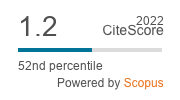Abandono de los estudios universitarios: dimensión, factores asociados y desafíos para la política pública
Abstract
Argentina se destaca en América latina por tener una de las tasas brutas de educación superior más altas, similar a la de los países desarrollados, fruto de un sistema no selectivo de admisión. No obstante, la igualdad de oportunidades en el acceso no ha sido suficiente para garantizar la equidad en los resultados. Teniendo como fuente de información la Encuesta Permanente de Hogares, en este artículo calculamos, en primer lugar, la tasa de abandono global total y según el nivel socioeconómico del hogar, el género y la región de residencia. En segundo lugar, estudiamos los factores asociados con la probabilidad de abandonar los estudios empleando un modelo de regresión logística. Concluimos que en el 2013 38 por ciento de los jóvenes que tenían al momento de la encuesta entre 18 y 30 años abandonaron la educación universitaria. Esta tasa presenta brechas significativas según nivel socioeconómico, género y región de residencia. Encontramos además que la probabilidad de abandonar es mayor entre los varones, los que trabajan, los que habitan en hogares de menor ingreso per cápita familiar y clima educativo y varía además según la región de residencia. El artículo concluye con una reflexión sobre las políticas públicas que podrían contribuir con la mejora en la persistencia y la equidad de resultados en el sector universitario.
Abstract
Argentina stands out in Latin America for having one of the foremost gross enrollment rates in higher education, similar to developed countries, as a consequence of an open-admissions system. However, equal opportunities in access alone do not ensure equity in the results. Using data from the Argentine Permanent Household Survey, we first calculate the global dropout rate according to the socioeconomic status of students’ household, gender and area of residence. Second, we analyze the determinants of university students’ propensity to drop out, estimating a logistic regression model. We conclude that in 2013, 38 percent of those university students between ages 18 and 30 dropped out of college. The data also revealed important gaps according to socioeconomic status, gender and area of residence. The probability of leaving college is higher among men, depends on whether they work and live in households with the lowest per capita income and educational level, and varies according to their area of residence. We conclude with some reflections on public policies that could contribute to improve the persistence and equity results in the Argentine university sector.
Downloads
Downloads
Published
How to Cite
Issue
Section
License
Authors who publish in this journal accept the following conditions:
Authors conserve the copyrights and cede to the journal the right for first publication, with the work registered with the attribution licence of Creative Commons, which allows third parties to use the published work as long as they mention the authorship and the first publication in this journal.
The authors may make other independent and additional contractual agreements for the non-exclusive distribution of the version of the article published in this journal (e.g. include it an institutional repository or publish it in a book) as long as it clearly indicates that the work was first published in this journal.
Authors are allowed and indeed recommended to publish their work on the internet (for example on institutional or personal pages) before and during the revision and publication process, because it can lead to productive exchanges and greater and faster dissemination of the published work (see The Effect of Open Access).
Accepted 2016-02-02
Published 2016-02-02
- Abstract 1468
- PDF (Español (España)) 261










